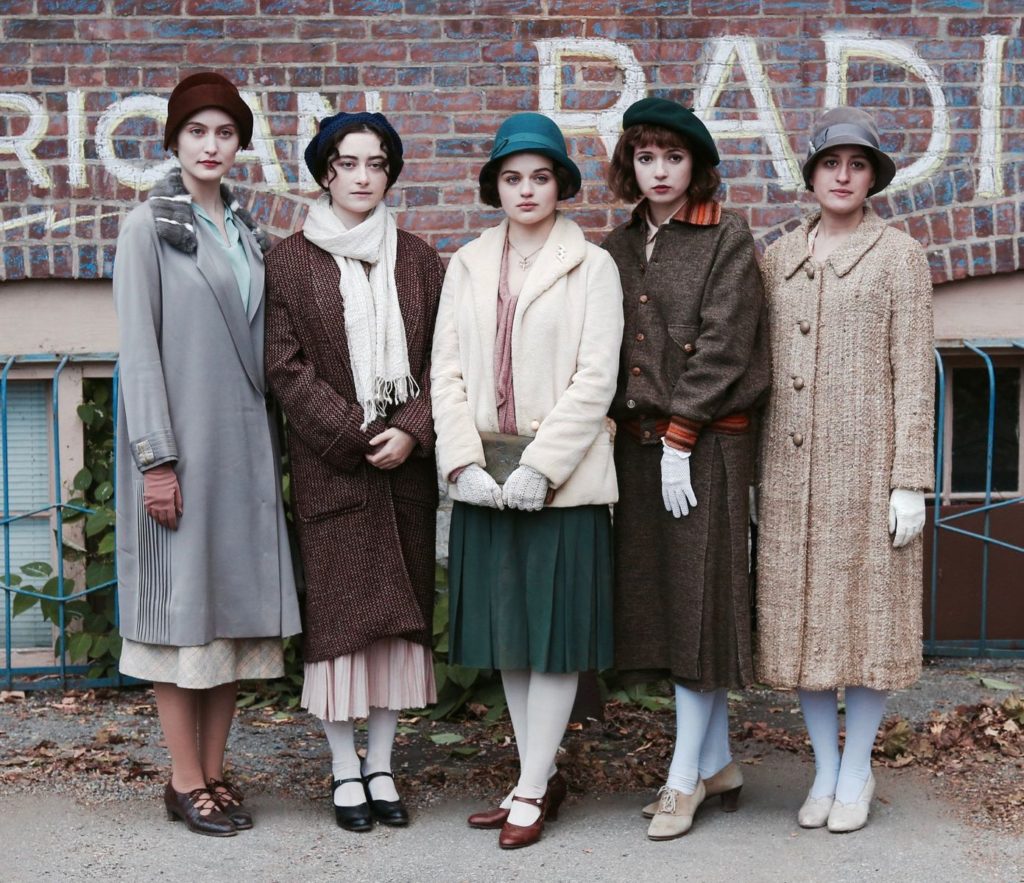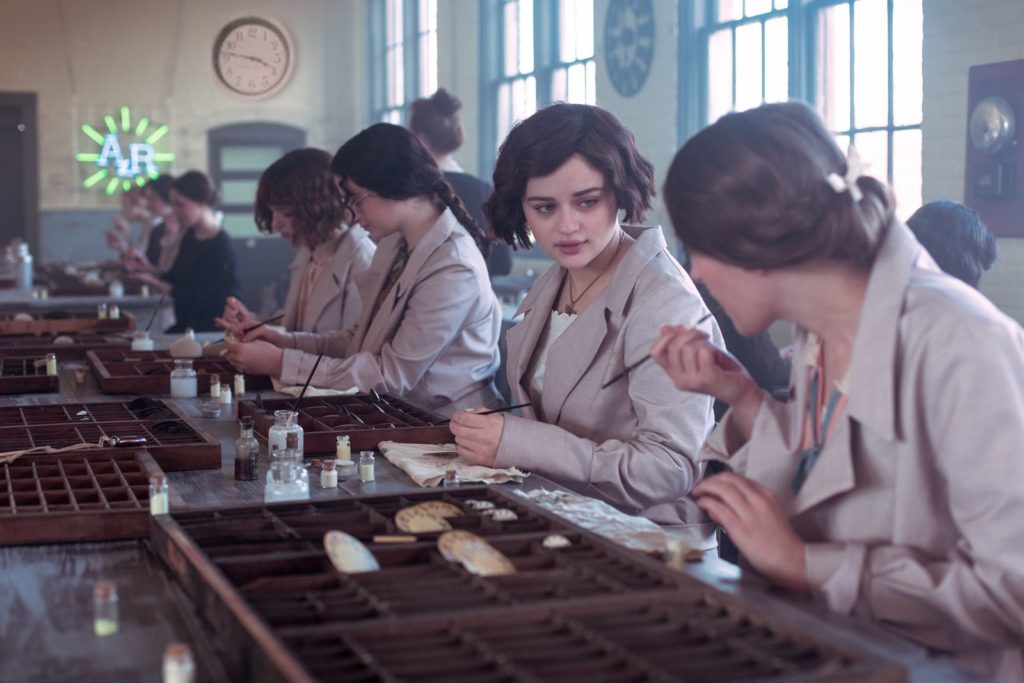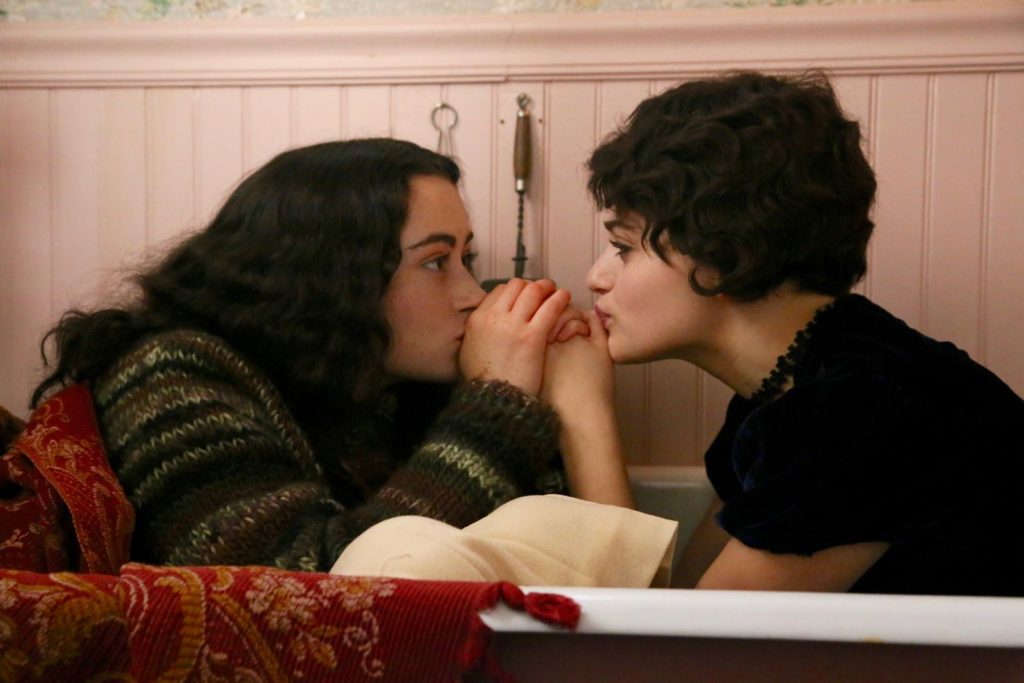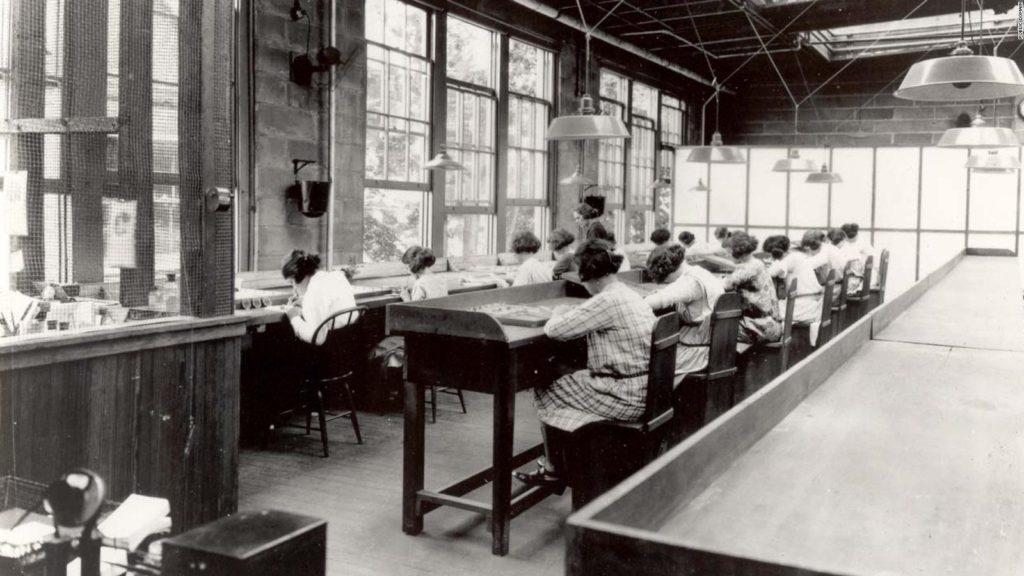
Director Lydia Dean Pilcher and writer Ginny Mohler’s film Radium Girls starring Joey King and Abby Quinn is based on the true story of sisters in 1928 New Jersey who blew the whistle on a shocking case of industrial poisoning. 4,000 young women in the U.S. and Canada worked as clock painters using the newly discovered element radium which makes things glow. They brushed radium paint on watch faces and had fun with it, painting their teeth and nails. They were instructed to lick the paintbrushes to get a good “point” even as executives knew radium was poison. The girls suffered unusual illnesses, tooth loss, unexplained bleeding, and bone deterioration. Some died. When a worker realised radium was the root cause, she and co-workers took on the corporate giant in what became a landmark case. What She Said’ Anne Brodie spoke with Pilcher and Mohler.
I was fascinated and appalled by the story. The world had a crush on radium in the twenties, it was everywhere, beauty products, soft drinks, hospitals. How did they get it so wrong?
Ginny – Yes, the world had a crush on radioactivity. There hadn’t been time for long term testing or studies to be done. And people loved it, there was magic in the idea of X-Rays. You could put your foot in an X-Ray box and see your bones. They had no idea the properties of the side effects of radium. They needed to pause and pull back and deal with radium’s destructive forces.
Lydia – There are medical benefits of radium, cancer tumours can be reduced in size. These discoveries set into the narrative of radium being the miracle elixir of all time. It’s like the testing for COVID. Ginny and I have talked about it since we made the movie originally. It makes you question the water problem in Flint, Michigan, and now the COVID. There are so many parallels between this virus and this element discovered without knowing everything about it and the fact that research was controlled by corporations, science denials and work safety issues. The parallels are chilling.

The two young sisters in the film who work in the factory had an older sister who also worked there and died of a mystery illness. And no one warned them.
Ginny – I think something was going on for a lot of workers and people at the factory. This question do I do what’s right for the company, job, family or do I do what’s right? A few of the characters in the film are facing and making different choices, and there was the exploitation of people for the benefit of the corporation. (The executive assistant) is an example of the psychology, to have to make a tough choice, as more information came out. People looked at what mattered to them, and some acknowledged what was happening. It’s not easy to be a whistleblower.
The girls became activists, a tough proposition in the twenties when women had their place. They fought big money and a social-political mindset. Heroes.
Lydia – It was in Orange, New Jersey, there was an interesting confluence. Kathryn Wylie Wiley of the New Jersey Consumers League was contacted by women in the Health Department about reports of sick workers. Wylie Wiley looked into it getting influential women onside like, Dr. Alice Hamilton, (a pioneer in the field of toxicology and the first female professor at Harvard Medical School), and the League of Women voters who were ready and willing to use their vote and look to these areas for legislation where it was needed. There were Radium factories in the United States and other countries, but these New Jersey girls were ready to act. I will say Lydia Ginny and I have heard many people say they’d never heard of the story. But the EPA scientists reached out to us and were thrilled that we were doing the project. They let us know that the Radium Girls story is often used in litigation around toxic regulation, even today.

How did you find and develop the story?
Ginny – I was working as an archival researcher with Brittany Shaw, a film friend, researching the Manhattan Project and we stumbled across the article “The Tragic Dial Painters of World War One”. I made a hard stop and wondered what a dial painter was and what happened., I looked at Wikipedia and saw Radium Girls. I immediately emailed colleagues and friends and said can you believe this happened?

How did Lily Tomlin and Jane Wagner come into play as executive producers?
Lydia – We had reached out to a group of theatre investors who were extremely interested in the story and Lily and Jane were part of the group. They were captivated by the story and wanted to do whatever to make it happen.
The attention to period detail is brilliant and includes the Egyptian culture and décor.
Ginny – I can just say that was so important to me and Brittany to show Bessie and Jo as teenagers in the ’20s and their understanding of pop culture, silent films, Egyptology and through those things find out who they are. Josephine was interested in Egyptology for the archeology and culture and Bessie had a poetic, dreamy, Goddess of Truth and being a movie star. It carries her through the film.
Rosamund Pike plays Marie Curie in Radioactive out now. Interesting timing. Was there an event that might have got the creatives thinking about the same subject matter at the same time?
Lydia – Ginny and I are aware the story existed in a less high profile way, there are a couple of documentaries and books, Katie Moore wrote a book, but we had finished our movie before the book came out. The timing around our movies started in 2017 so the bubble is interesting. There is also a play Radium Girls, and it’s in the top ten plays performed in US high schools three years straight. I can’t even tell you when they heard we were making a movie, but they were excited and wanted to know when they could see it. Last night, a girl in LA reached out to me on Instagram to say they’re doing the production of the play on Zoom this fall. I’m excited to see their play and engage. When history and science and art come together in a meaningful way.
In Select Theaters and Virtual Cinemas on October 23rd.